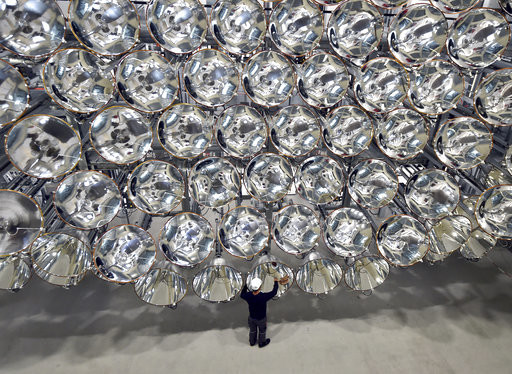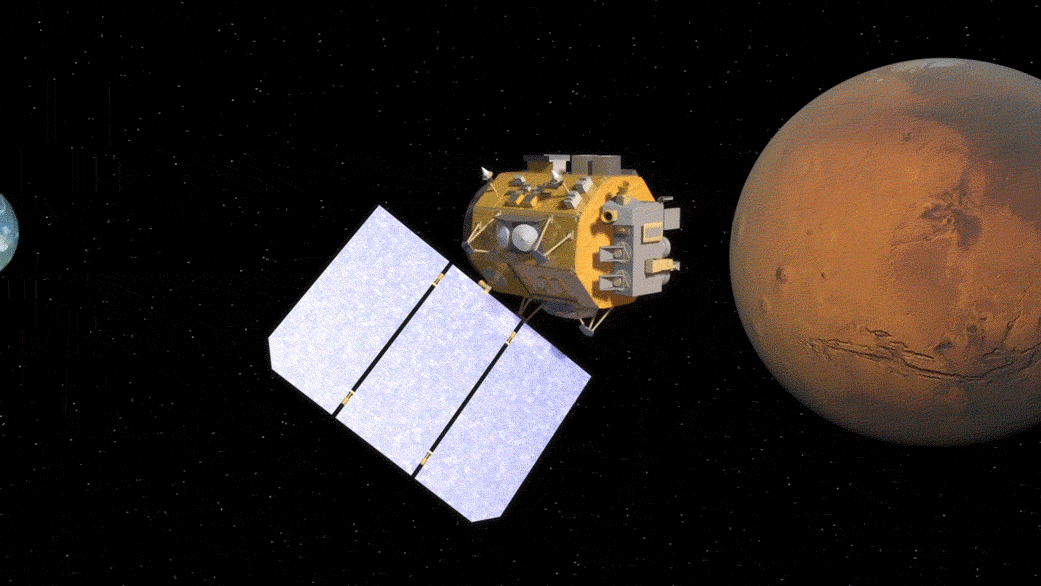This week in science is a review of the most interesting scientific news of the week.
Scientists have created a huge “artificial sun” to generate hydrogen from water

Hydrogen is considered by scientists as the best alternative fuel to current fossil fuels because it doesn’t produce carbon emissions when burned to generate power, which means it doesn't add to global warming. Unfortunately, hydrogen is rare on Earth, in contrast to the rest of the universe, and therefore it is necessary to obtain it from sources such as water.
Inspired by concentrated solar power plants, which use mirrors to focus sunlight onto a small area to increase the temperature of a small area where steam from melted salt is produced to generate power, scientists from the German Aerospace Center have created the Synlight. Built in Jülich, Germany, Synlight uses 140 Xenon short-arc lamps focused on a 20 by 20-centimeter spot to generate light 10,000 times more intense than the Sun’s radiation that reaches anywhere on Earth, achieving temperatures above 3,000°C.
This enormous structure has cost $3.8 million to be built and consumes in four hours the same amount of electricity as a four-person household would in a year. But if the scientists succeed in their attempt to trigger a high-energy reaction to extract hydrogen from water vapor, Synlight could then be used as a prototype for future large-scale and constant sources of liquid hydrogen fuel.
Finally, this is not the only possibility for obtaining hydrogen from water being currently researched. As already covered here at Neowin, photoelectrochemical cells (PECs) are responsible for absorbing sunlight and driving water-splitting reactions, from which hydrogen is generated, and could as well be used as future sources of hydrogen fuel.
Source: MIT Technology Review
Scientists have suggested a "carbon law", like Moore's Law, to achieve zero emissions

Global warming due to the increased concentration of greenhouse gasses in the atmosphere is already responsible for negative changes on Earth, such as more frequent coral bleaching events. That is why a group of European scientists has created what the Guardian has called a “Moore’s law for carbon”. Their work, "A roadmap for rapid decarbonization", was published last Friday in the journal, Science.
According to the authors of the study, by following a roadmap based on published studies, policy makers could halve carbon dioxide emissions every decade. This roadmap applies to all sectors and countries at all scales. Such an achievement was already seen by the chip industry, which was able to follow Moore's Law for decades based on enough investment, ambition, and scale.
This all may sound like a daydream, but as stated by Johan Rockström, director of the Stockholm Resilience Centre at the Stockholm University and co-author of the study:
"In the last decade, the share of renewables in the energy sector has doubled every 5.5 years. If doubling continues at this pace fossil fuels will exit the energy sector well before 2050."
The researchers have sketched out a broad decarbonization plan considering four dimensions: innovation, institutions, infrastructures, and investment. According to them, this plan provides "evidence of feasibility and depth of transformation for economies to stay on a carbon-law trajectory". The following excerpts provide a small account of the timeline developed for the "carbon law" implementation and the expected results:
2017–2020: No-Brainers
Annual emissions from fossil fuels must start falling by 2020. Well-proven (and ideally income-neutral) policy instruments such as carbon tax schemes, cap-and-trade systems, feed-in tariffs, and quota approaches should roll out at wide scale.2020–2030: Herculean Efforts
Economies must implement the no-brainer mitigation measures plus the first wave of smart and disruptive action. Improving energy efficiency alone would reduce emissions 40 to 50% by around 2030 in many domestic and industrial cases.2030–2040: Many Breakthroughs
By 2040, oil will be about to exit the global energy mix. Several vanguard countries (such as Norway, Denmark, and Sweden) should have completed electrification of all sectors and be entirely emissions-free or close to it.2040–2050: Revise, Reinforce
Building on successes and learning from failures of previous stages, certain mitigation strategies will be abandoned and others refined and amplified. All major European countries become close to net-zero carbon states early in the 2040s; market dynamics push North and South America and most of Asia and Africa to this goal by the end of the decade.
Finally, the scientists have stated the proposed roadmap must be revised every two years to correct near-term targets. Because it is not possible to predict where civilization will be in half a century, relying on a detailed and always revised, broadly-adopted plan may be what it takes to "make a zero-emissions future an inevitability rather than wishful thinking".
Source: Phys.org | Rush hour image via Shutterstock

Source: NASA's Goddard Space Flight Center.
NASA will use lasers to connect Mars to Earth’s internet
NASA’s Laser Communications Relay Demonstration (LCRD) team, in partnership with the MIT and the US Air Force, is starting to study how to operate laser communications systems that could become the high-speed internet for interplanetary communications. According to Steve Jurczyk, associate administrator of NASA's Space Technology Mission Directorate, which leads the LCRD project:
“LCRD is the next step in implementing NASA's vision of using optical communications for both near-Earth and deep space missions. This technology has the potential to revolutionize space communications.”
Laser communication encodes data into a beam of light with data rates 10 to 100 times better than current radio-frequency communications systems and has lower size, weight, and power requirements. The initial test of LCRD will rely on two ground stations equipped with laser modems at Table Mountain, California, and at Hawaii, which will communicate with LCRD, which will be in a geosynchronous orbit between the stations. The LCRD, which is expected to launch in summer 2019, is a three-components-device with two identical optical terminals linked by a space switching unit that acts as a data router.
But the project goes further. Don Cornwell, director of the Advanced Communication and Navigation division of the Space Communications and Navigation program office at NASA Headquarters, has also confirmed the development of a laser terminal for the International Space Station (ISS), which will relay data from the ISS to the ground at gigabit-per-second data rates. This terminal is expected to be launched in 2021.
Source: Phys.org



















11 Comments - Add comment